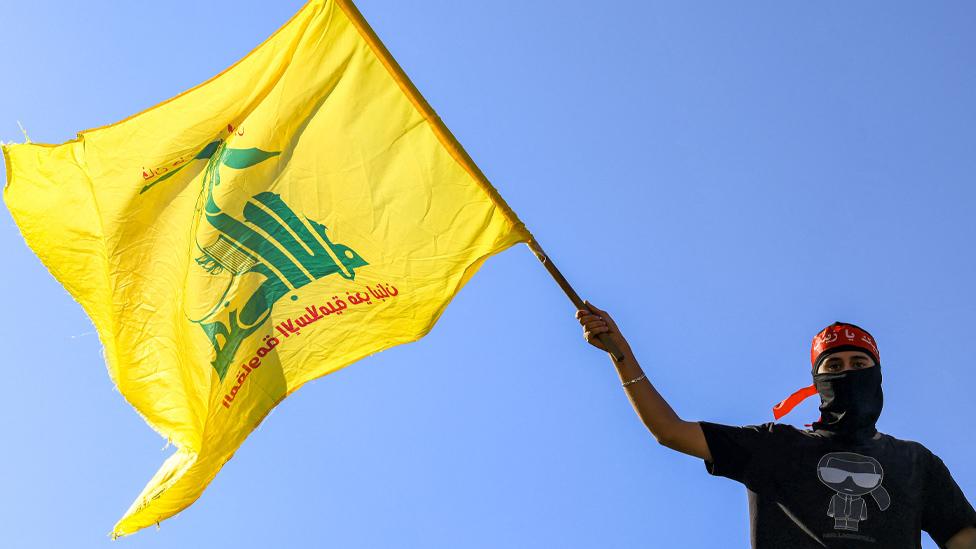Cold military logic takes over in Israel-Hezbollah conflict

A rocket-damaged house in Givat Avni, northern Israel
- Published
It seems hard to believe that it’s less than a week since Hezbollah’s communication devices started exploding all across Lebanon.
The days since have represented a series of catastrophic setbacks for the formidable, Iranian-backed Shia militia.
With its networks disrupted, its fighting men mutilated, its leadership assassinated and its military infrastructure under constant bombardment, Hezbollah is facing its worst crisis in four decades.
Now Israel’s defence minister says the campaign is “deepening”.
But it’s a high-risk strategy, in which Hezbollah’s ability to respond cannot be ignored.
With alerts constantly sounding across northern Israel, Yoav Gallant has told Israelis to “show composure, discipline and full obedience to the directives of Home Front Command”.
We found all on display in equal measure when we visited the small community of Givat Avni, a short distance west of Tiberias.
David Yitzhak showed us where a 120mm rocket tore through the roof of his family home at lunchtime on Monday.
With sirens blaring, David bundled his wife and six-year-old daughter into the house’s safe room, seconds before the explosion.
“It’s a metre from life to death,” David said, indicating the short distance between the safe room and the hole in his daughter’s bedroom.
He said he feels no animosity towards the people of Lebanon, but says Hezbollah started the war for no reason.
“So now we are giving back. And it will be OK.”
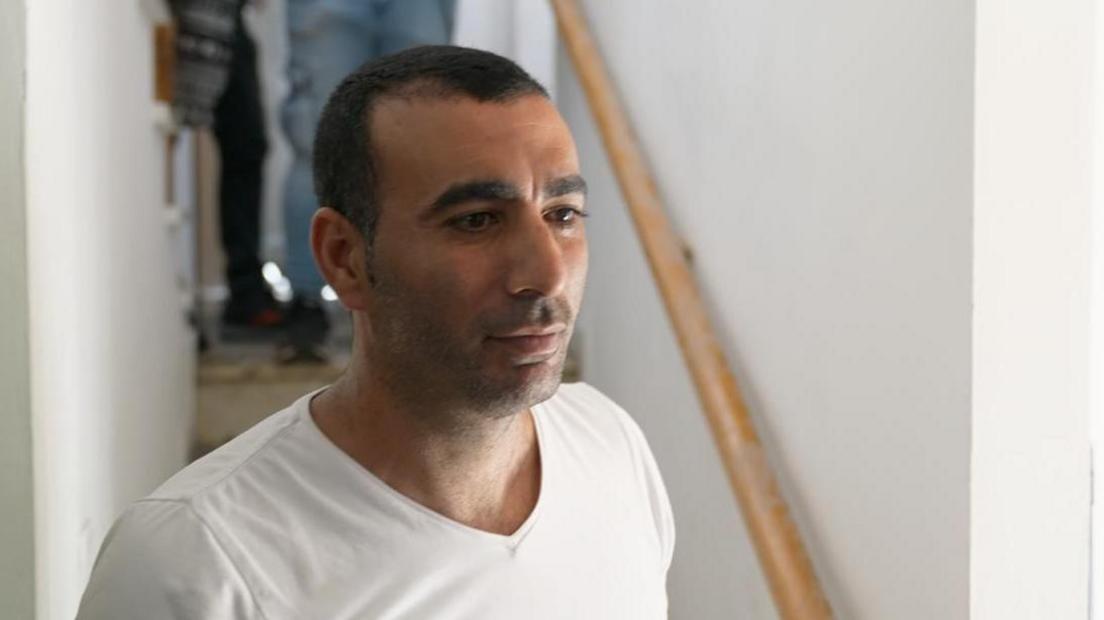
David Yitzhak's house in Givat Avni was damaged in a strike
But Givat Avni is 20 miles (30km) from the Lebanese border, far from the evacuation zone established by the authorities almost a year ago.
An hour later, as we arrived at nearby Kibbutz Lavi, home for the past year to families evacuated from further north, sirens sounded once more.
Rockets appeared in the sky overhead and as we were ushered into an underground shelter full of children and their artwork, we heard a series of deep resonant booms.
An hour later, more alerts, another safe room and more distant explosions.
Hezbollah had been firing rockets further into Israel, even before the latest escalation. But now an even larger swathe of northern Israel is in the firing line.
All of this is adding a sense of urgency to the government’s actions.
Speaking after a meeting with defence chiefs, the Prime Minister, Benjamin Netanyahu, said Israel was changing the balance of power in the north.
“We are facing complex days,” he warned.
“We do not wait for a threat,” he said. “We anticipate it. Anywhere, in any arena, at any time. We eliminate senior officials, eliminate terrorists, eliminate missiles.”
Having seized the initiative, Israel’s military seems determined to keep Hezbollah on the back foot, in the hope of realising the government’s aim of returning civilians to homes evacuated along the northern border.
On Monday morning, it stepped up another gear, telling Lebanese villagers to leave places where they believe Hezbollah is concealing its bigger weapons.
Military officials showed journalists a video of an air strike in which Israel says it destroyed a modified Russian cruise missile, hidden inside a house.
In another “illustration”, we were shown a skeletal 3D mock-up of a village in southern Lebanon, full of concealed weapons and equipment.
The mock-up, and the instructions to civilians to leave, all carried echoes of Israel’s efforts to explain its actions in Gaza.
But military officials insist that, unlike Gaza, the warnings do not mean that the army is poised to move in on the ground in southern Lebanon.
“We are currently focusing on Israel’s aerial campaign only,” a senior official said on Monday.
It seems that for now, Israel will see what it can achieve from the air. A former commander, speaking on Israel’s Channel 12, said that so far, the air force had shown only a fraction of its capabilities.
But there’s only so much Israel can achieve from the air, even if, as seems possible, jets are about to lay waste to entire villages.
At some point, a ground invasion – however limited – seems unavoidable.

Iron Dome interceptor missiles are fired from Haifa in northern Israel on Monday evening
But would it be wise?
“That’s exactly what Hezbollah wants,” Dr Jacques Neria, a senior researcher at the Jerusalem Centre for Security and Foreign Affairs, told i24 News.
“The residents of southern Lebanon are Hezbollah soldiers,” he said. “And therefore we will have to fight against a mass that we do not know, under unfamiliar conditions.”
In his defiant speech last week, Hezbollah’s leader Hassan Nasrallah dared Israel to attempt to create a buffer zone in southern Lebanon, something the head of Israel’s Northern Command is said to be pushing for.
Such an effort, he said, would have “dire consequences” for Israel.
At the moment, there’s no sign of a diplomatic off-ramp. US-led efforts to defuse the conflict between Israel and Hezbollah have run into the sand, along with negotiations aimed at securing a ceasefire in Gaza and the release of Israeli hostages.
Cold military logic – strike and counter-strike – appears to have taken over.
This is not a battle of equals. Israel knows it can beat Hezbollah.
There’s a complete asymmetry in the level of destruction and suffering that each side can inflict on the other.
But where the conflict is heading, and how much worse it will get before it ends, is anyone’s guess.
Related topics
- Published23 September 2024
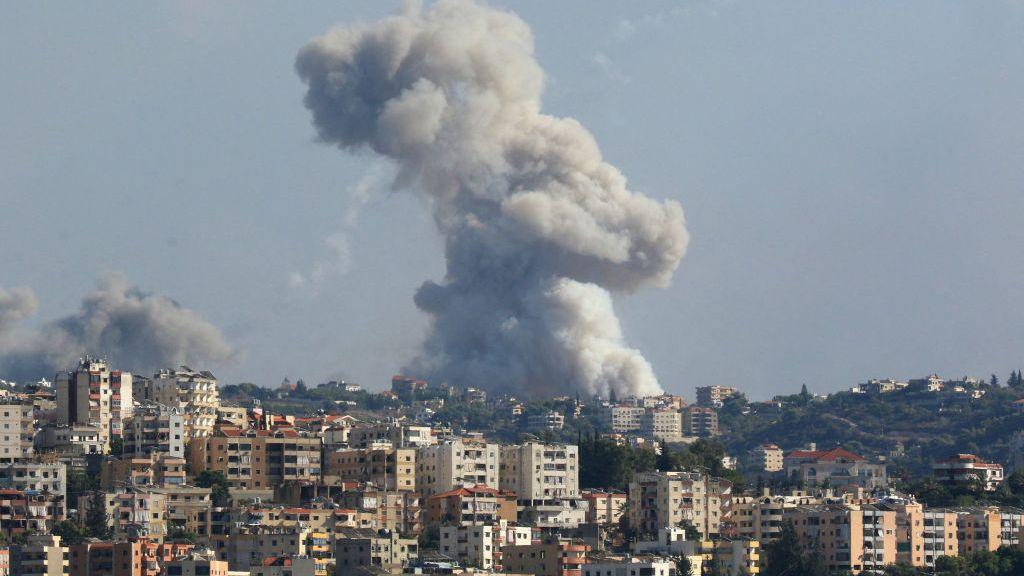
- Published24 September 2024
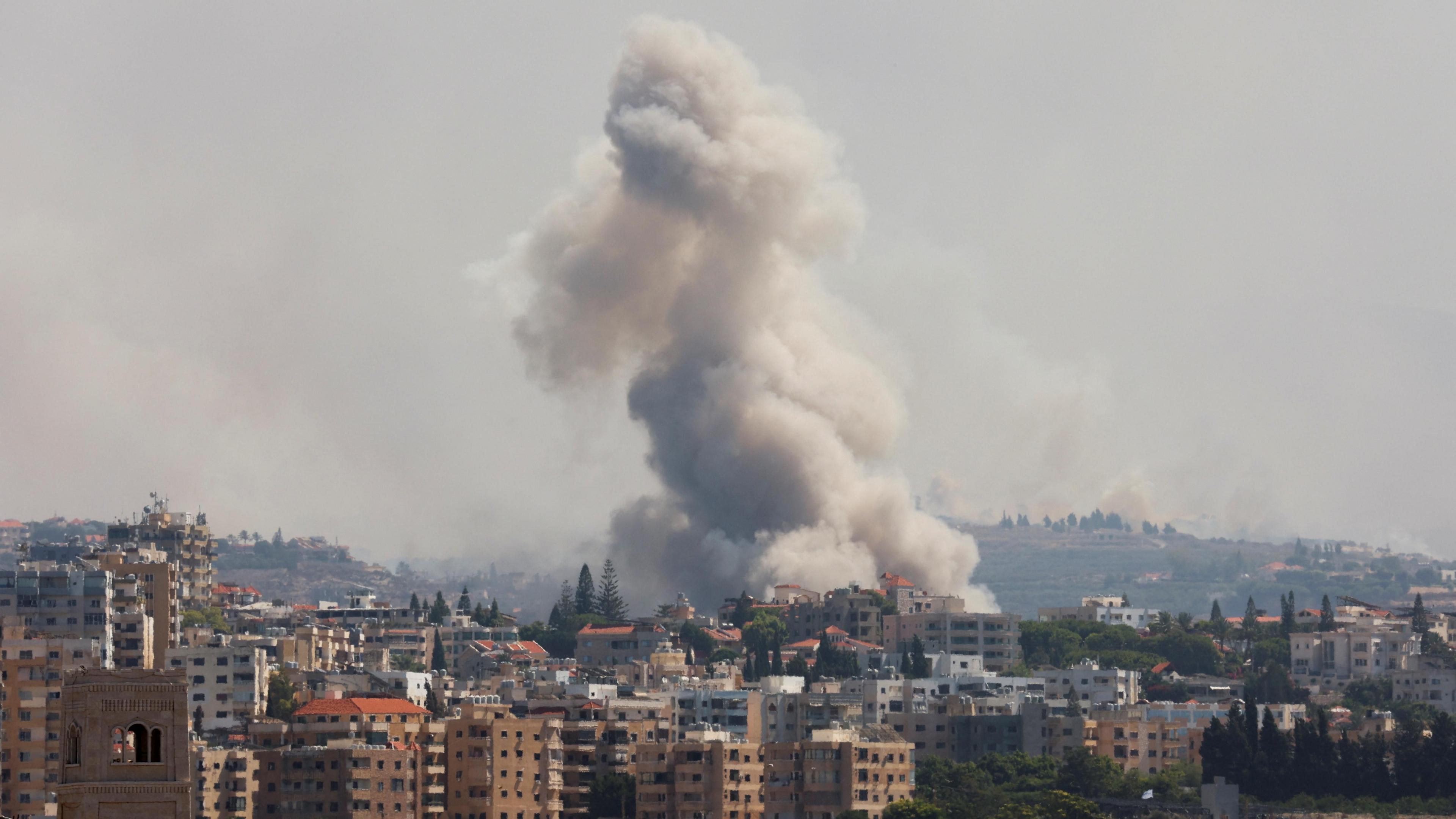
- Published20 September 2024
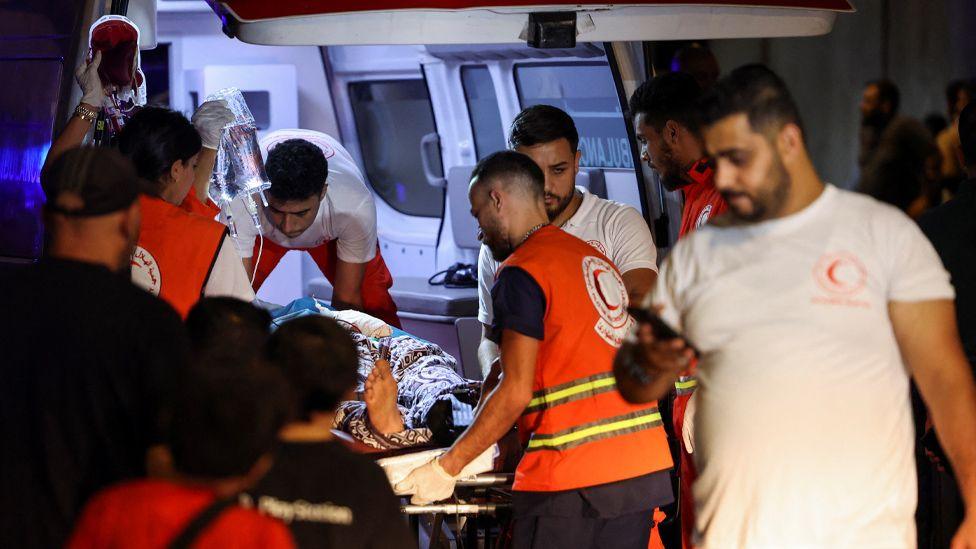
- Published14 February
